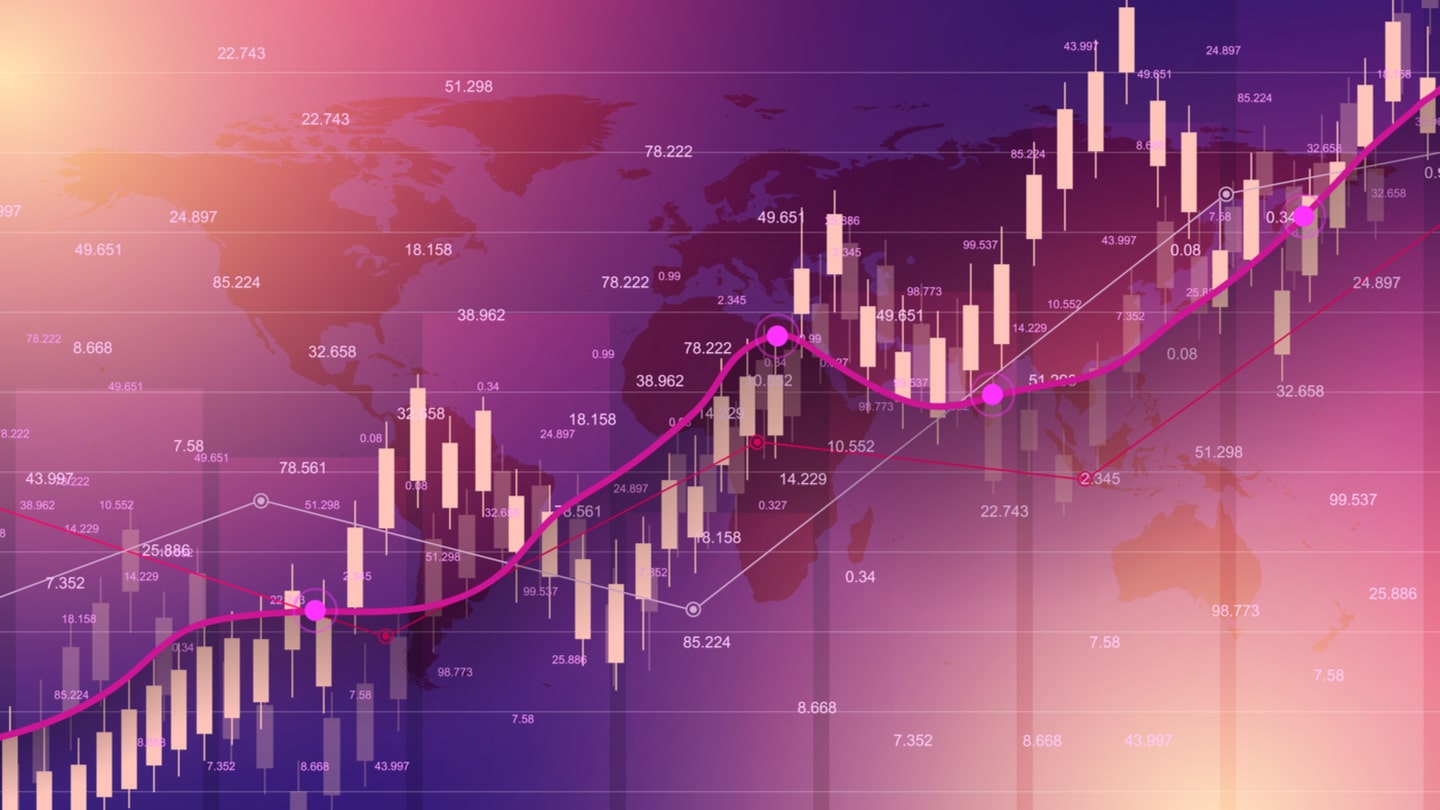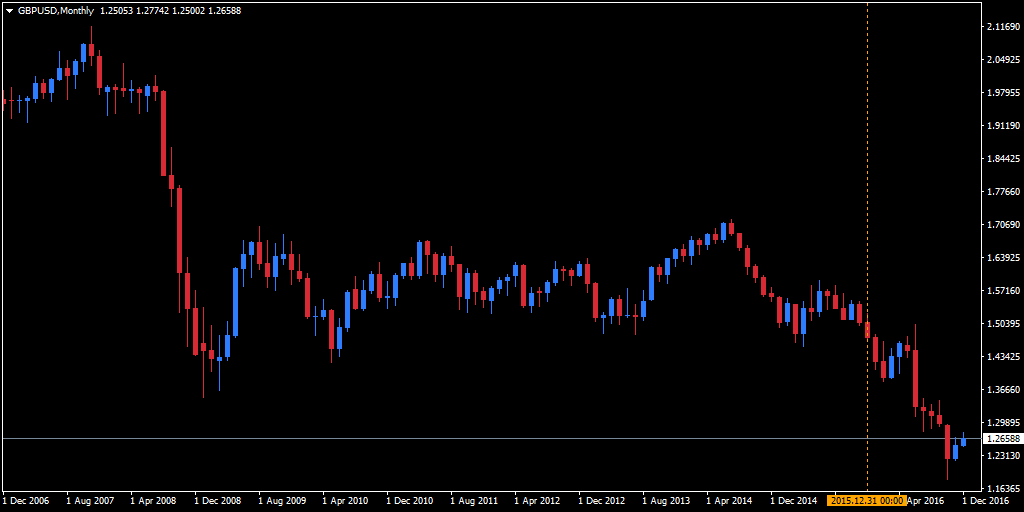There have been many attempts over the years to produce theories that allow the determination of 'correct' equilibrium values for Forex (FX) exchange rates. This article is going to look at using the concept of Purchasing Power Parity (PPP). PPP was originally conceived as a means of gauging long-term equilibrium exchange rates between currencies. It is now, however, more commonly used as a tool for cross-country economic analysis, as we shall see.

What is Purchasing Power Parity?
Purchasing Power Parity—often referred to simply by the acronym PPP—relies on a key assumption. It assumes that a basket of goods in one country should cost the same as an identical basket in another country. This stems from the Law of One Price.
What is the Law of One Price?
The Law of One Price states that any freely-traded goods will sell for the same price around the globe, when the price is in a common currency. Theoretically, the action of arbitrage should work to move prices so that they are consistent with the law of one price. Therefore, the theory assumes that transaction costs are equal everywhere.
In practice, transaction costs relate to the geographical location of the buyer and the product. Consequently, the law will only really work if we are able to exclude transportation costs, tariffs, taxes, and other location-specific outlays. Let's look at an example to better understand this theory:
The Law of One Price: Example
Let's compare the price of wheat in the US with its price in the UK, to illustrate the theory:
Let's suppose that the price of wheat in the US is $4 per bushel
If the GBP/USD currency pair value is 1.2500, then—excluding transportation costs and so on—the price of one bushel of wheat in the UK should be 4/1.25 = £3.20
If the price diverges from this value, an arbitrage opportunity exists.
However, what if wheat was cheaper than £3.20 in the UK, what would this mean?
It would mean that traders could purchase the wheat in the UK and sell it immediately at a higher equivalent cost within the US—all for a zero-risk profit. Such trading action would serve to drive the price of wheat higher in the UK and lower in the US. This would continue until an equilibrium was reached, and the prices in both countries obeyed the law of one price. The law of one price is often confused with PPP, but the two are subtly different.
So what does PPP mean?
The law of one price is specifically for the price of individual and identical goods or services. We define purchasing power parity by extending the law of one price to consider prices in aggregate. The simplest form of the theory is absolute purchasing power parity.
What is Absolute Purchasing Power Parity?
Absolute PPP holds that exchange rates are in equilibrium when the value of a national basket of goods and services are the same between two countries. The purchasing power parity theory predicts that market forces will cause the exchange rate to adjust when the prices of national baskets are not equal.
If we are comparing country A to country B, with exchange rate E, the theory states that:
The Price of a basket in country A = The Price of a basket in country B x E
We can then manipulate this purchasing power parity formula to give:
E = The Price of a basket in country A / The Price of a basket in country B
Therefore, the PPP exchange rate equals the ratio of a basket of goods in one country, with an identical basket of goods in another. This will not hold unless the baskets are identical, however, and this is easier said than done. One particular problem is ensuring the weightings given to goods in each basket are the same.
It is often more convenient, therefore, to consider instead relative purchasing power parity, which does not require the same basket of goods in each country. However, this is a double-edged sword, because It makes relative PPP much easier to measure, but it also makes it a weaker version of PPP than the absolute version.
What is Relative Purchasing Power Parity?
This is the relative purchasing power parity definition: The exchange rate between two countries will adjust in response to a difference in the two national inflation rates. To go into the specifics of the relative purchasing power parity equation is beyond the requirements of this discussion. Put simply though, relative PPP suggests that the exchange rate will change by a percentage that equals the difference in the inflation rates.
Simple Relative Purchasing Power Parity Example
Let's suppose that the inflation rate in the US is 2%, and the inflation rate in the Eurozone is zero. Relative purchasing power parity states that the Dollar should weaken against the Euro by 2% each year. In reality, we would not expect a strict adherence to this annual change in value. Instead, we might expect to see some sort of conformance to PPP in the long-term average.
Importers and exporters should respond to differences in the relative costs of baskets of tradable goods in ways that, on average, should be consistent with the law of one price. It follows that by comparing exchange rates implied by PPP to market exchange rates, it might help us to view a currency pair as overvalued or undervalued.
So does purchasing power parity actually hold true? In short, the answer is not really, at least in the short or medium term. Of course, you can gather your own empirical evidence to determine the effectiveness of the theory. As a very rough exercise, we looked at the market rate for the GBP/USD currency pair over a ten year-period. We then compared it with changes in the inflation rates. Here's a monthly GBP/USD chart taken from MetaTrader 4:

Depicted: MetaTrader 4 - GBPUSD Monthly Chart - Disclaimer: Charts for financial instruments in this article are for illustrative purposes and does not constitute trading advice or a solicitation to buy or sell any financial instrument provided by Admirals (CFDs, ETFs, Shares). Past performance is not necessarily an indication of future performance.
We then looked at annual changes in the CPI rates for the US and the UK between 2005 to 2015. The Bureau of Labor Statistics publishes this for the US, and the Office for National Statistics provides the data for the UK. Overlaid on the GBP/USD chart, the difference between the inflation rates looks something like this:

Depicted: MetaTrader 4 - GBPUSD Monthly Chart with accompanying statistics from The Bureau of Labor Statistics and the Office for National Statistics - Disclaimer: Charts for financial instruments in this article are for illustrative purposes and does not constitute trading advice or a solicitation to buy or sell any financial instrument provided by Admirals (CFDs, ETFs, Shares). Past performance is not necessarily an indication of future performance.
From a trader's perspective, it can be argued that there is some broad agreement there, but you may find it more convincing to perform your own research beyond this quick version. Bear in mind that the line drawn is just a visual aid for the scatter points, rather than an actual representation of interpolated points.
Of course, a large amount of empirical evidence has already been gathered on the subject. In a research paper on PPP, the St Louis FED noted that "after accounting for average levels of overvaluation and undervaluation, there is evidence of convergence toward PPP."
However, it's the divergence that we need to worry about, because it is significant. Evidence suggests that there is prolonged divergence from the theory for both absolute and relative PPP, meaning that we need an explanation for why the theory fails. To provide this explanation, we need to look at the disadvantages of PPP, of which there are more than a few.
If you are interested in trading with some of the knowledge you have gained today, an excellent way to experiment with real market data is to use Admirals' risk-free demo trading account. MetaTrader 4 offers very good charting tools and a number of useful indicators. If you want an even more cutting-edge selection of indicators and tools however, you should consider downloading the MetaTrader Supreme Edition plugin for MetaTrader 4 and MetaTrader 5.
Disadvantages of Purchasing Power Parity
In order to define PPP, we extended the law of one price. In other words, PPP is only going to hold up if the law of one price first holds true. Unfortunately, it doesn't really stand up to scrutiny. You'll probably have observed yourself when filling up your car that prices at the pumps vary from city to city. So the law of one price doesn't even hold perfectly between markets within a single country.
Why is this? It is because there are barriers to trade. We do not operate in a world where there are zero transportation costs. Nor is price information perfectly and immediately available to all participants. Therefore, there may be price discrepancies that are not inevitably whittled away by arbitrage. Taxes and tariffs are further examples of real-world barriers that hinder the international movement of goods.
More importantly, there is also the effect of non-traded costs. Some items will factor into price baskets but cannot be traded. Primarily, these are labour and land. PPP also relies on markets being perfectly competitive. Companies pricing to market—charging more in countries with inelastic demand—will interfere with this.
Another drawback is the difficulty in compiling the data. Recording market-based exchange rates is extremely easy. To put together wide baskets of data for different countries is a huge job, and the data is, therefore, only recorded infrequently. FInally—even if we assume that PPP can provide a long-term benchmark guide to whether an FX rate is under or overvalued—its use may be limited by the timeframes involved.
Most CFD traders are looking at timeframes of days and weeks, rather than years. So if PPP has limited utility within the real world as a predictor of exchange rates, why do we care about it? One reason that people have been reluctant to discard the theory is that PPP is, at its core, very logical. It is one of the few fundamental ways to try and determine if a currency is overvalued or undervalued. More important than that, though, it is also an excellent tool for making like-for-like comparisons between countries.
Trade Forex & CFDs With Admirals
Professional trading has never been more accessible than right now! Admirals offers professional traders the ability to trade on the Forex market directly and via CFDs with 80+ currencies, including Forex majors, Forex minors, exotic pairs and more! Open your live trading account today by clicking the banner below!
Trade Forex & CFDs
Get access to over 40 CFDs on currency pairs, 24/5
START TRADING

Purchasing Power Parity Theory and its Role in International Business
The most common application of PPP is as a way of comparing metrics such as wages and GDP across countries. When looking at GDP, PPP allows us to make a more apples-to-apples comparison, that takes into account how the cost of living for each territory may differ. Let's say that we wanted to compare the GDP per capita between the UK and Mexico. The quickest way would be to just take the spot rate for the GBP/MXN currency pair, and convert the Mexican GDP per capita—recorded and reported in Mexican pesos—into a figure in Pound Sterling.
This would give a slightly skewed result, though, because it does not take into account how far the money goes in each country. Also, if the market exchange rate fluctuates suddenly, it can make a big difference on such a comparison. You might also find that the GDP of one country appears to have grown relative to another, just because of a temporary blip in the market exchange rate.
What we can do instead is to adjust for Mexico and UK purchasing power parity. Purchasing power parity exchange rates enable us to compare living standards across countries. Furthermore, PPP rates are more stable over time compared with market-determined exchange rates. In fact, converting via PPP is a common method used by major economic bodies for comparing GDP, wages, etc.
The OECD and the IMF are just some of the well-known organisations that compile PPP index data. For example, you can see that the IMF uses GDP based on PPP in its World Economic Outlook Database. One of the more interesting versions is the Big Mac Index, which The Economist has been publishing since 1986. Tongue-in-cheek and simplified it may be, but it is, nonetheless, still a valid—and widely-followed—purchasing power parity index.
What is the principle behind the Big Mac Index?
With some notable exceptions, the Big Mac tends be uniform throughout the globe. The same bits and pieces go into creating a Big Mac in Wisconsin as they do in Leipzig in Germany, Thunder Bay in Canada or Melbourne in Australia. It makes some sense, therefore, to use the famous burger as a proxy for a small basket of directly comparably goods. In other words, it is an easy and convenient means of comparing how much bang you get for your Buck, Euro, Loonie or Australian Dollar.







